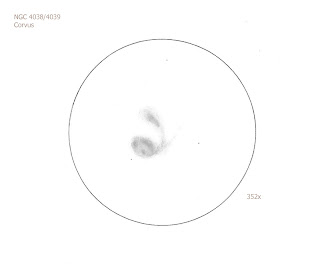The new shed is now in place. We started putting it up yesterday and after six hours, a lot of swearing and a few ‘teddies chucked out of prams’ (patience is not one of my strong points; fortunately the neighbours appeared to be out and thus, hopefully, did not hear an ‘f-word-every-other-word’ rant at one stage in the proceedings!) it was just about finished with only a few finishing touches to be added. I did make a couple of cock ups but it seems largely straight, secure and solid so I don’t think it’ll blow down in a gale. It also appears to keep the rain out. There was a thundery downpour this morning and, apart from rain coming in the windows as I hadn’t installed them, it looked to be bone dry with the sole exception of one side which let in a few drops in at floor level. I’ll get some sealant and sort that out. The real test will come when the autumn and winter set in and we get howling gales and driving rain. I am going to leave it for a while before I put my scope in it to see how it fares, that’ll let me see what needs doing to keep any weather out. I went to a party last night and a friend told me that any flat pack assemble-it-yourself item comes with free swear words, the amount of which directly correlates to the nature of the item and the annoyance factor of putting it up; i.e. kitchen units come with 100 free swear words, a shed like mine comes with about 100,000 while a greenhouse comes with several million!
I put the windows in this afternoon, unlike the rest of the thing there were no annoying mini-crises to put up with!
I have not done any serious observing for a while, apart from a couple of mini-sessions with the refractor on a couple of evenings two weeks back. This is because the weather is so highly variable at the moment and evenings which start off clear are not staying that way. We are having a very unsettled summer, apart from a hot couple of weeks in late June/early July. I did manage to sketch a couple of Messiers, just to keep my hand in, while cloud-dodging.
M8, the Lagoon Nebula in Sagittarius. 3.5″ refractor at 36x
M27, the Dumbell Nebula in Vulpecula. 3.5″ refractor at 36x.
I have no idea what these sketches look like on most people’s monitors. My 20″ widescreen monitor went bang just over a week ago so I took it back to PC World (who did not want to know, despite the monitor being well under a year old, so I had to resort to playing the arsey customer which, to be honest, I hate doing. I’ve worked in retail myself – it sucks) and am waiting for the repaired monitor or a replacement. In the meantime I am using an elderly borrowed 17″ square matte flat screen job which isn’t that good for picture editing or viewing. The sketches look appalling on this one, I am hoping that they look a lot better elsewhere!
I also aimed my 400mm Canon telephoto lens at the Moon the other evening – yes, you did read that right. The Moon. Not only that, it meant I was doing some astronomical imaging – the shame. ;-D
Here’s the result of that. I was quite pleased with it, especially as I was handholding the lens at 400 ISO and using a shutter speed of 1/320 sec at f/5.6. I sent a copy to my friend, the well-known author and astro-imager Robert Reeves, who sent me some feedback.
No, I am not going to become an imager, but I do like taking the odd shot now and then. It shows how desperate one can get to do something astronomical!
I have decided that I won’t mess around getting a 16″ Lightbridge. I do want a decent scope of 18 or 20 inches, so I will carry on saving and get a custom-built, quality Dob. One route, and one that I am currently investigating, is to buy an existing Dob chassis and get the optics to fit. I know someone who has a lovely one (a 20″) for sale, minus the optics. However, I’d need an f/3.7 mirror and secondary to fit it as buying a more common f/4 or f/5 would involve a bit of a rebuild, something I don’t want to get into. If I can’t easily get hold of an f/3.7 mirror for a reasonable price (i.e. comparable to that of an f/4) then I’ll probably revert back to Plan A, which is buy a custom-made dob.

























